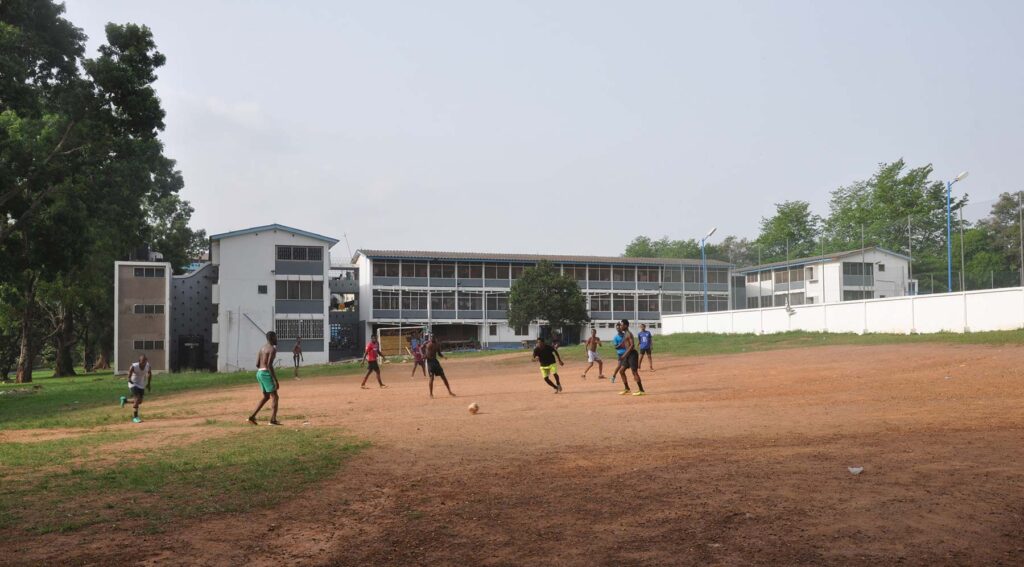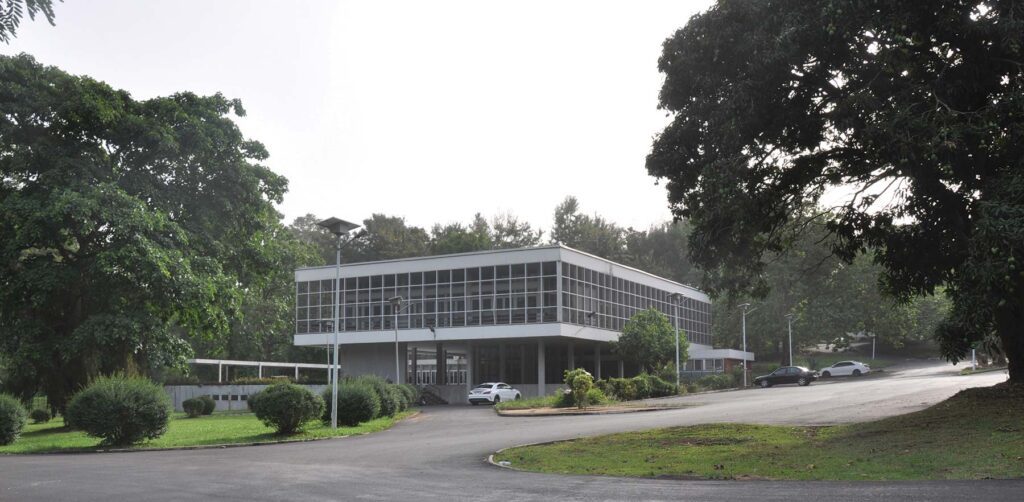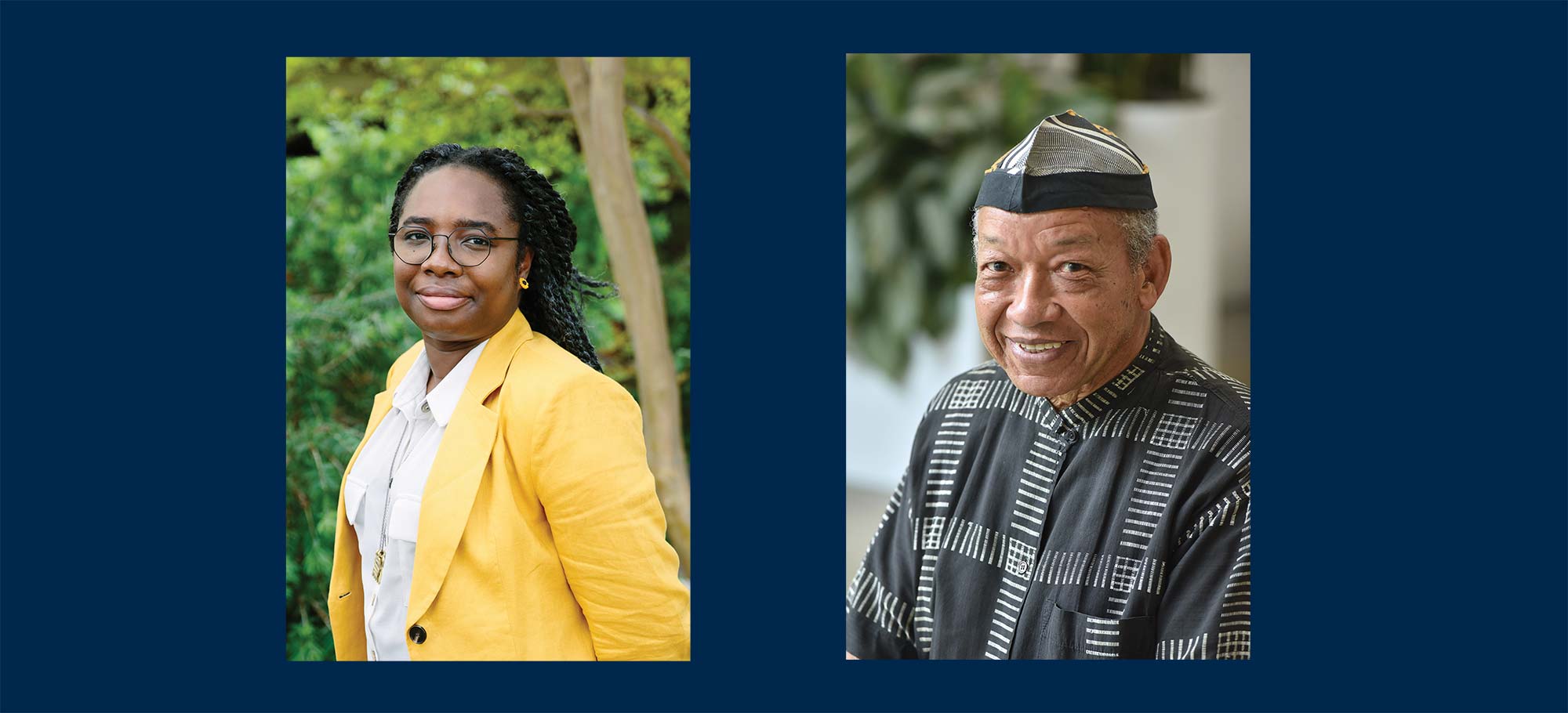Kuukuwa Manful joined Taubman College as an assistant professor of architecture in the fall of 2023, but her connection to the college goes back much further. As a student at Kwame Nkrumah University of Science and Technology (KNUST) in Kumasi, Ghana, she came to Taubman College in 2008 as part of the UM-KNUST West African Design Studio Exchange — StudioAFRICA. Soon, Professor Manful will be starting a new chapter in the legacy that the program began.
StudioAFRICA, founded by James Chaffers, professor emeritus, ran for a decade and took 88 Taubman College students to Ghana. In addition, the studio brought 14 Ghanaian students to Michigan — three completed their graduate studies at Taubman College.
“The biggest impact was interacting with Professor Chaffers,” says Manful of her experience in the studio, which took Taubman College students to Ghana and brought students from KNUST to the University of Michigan. “I had just started to study architecture. As with many architecture schools, mine greatly emphasized studios, designing, and building. Professor Chaffers thought on a different plane. He talked about things like the place of spirit and spirituality in architectural practice. Interacting with him, other architects, and architecture scholars showed me different possibilities. I saw firsthand that there were other things to consider in the built environment beyond building something.”
The studio didn’t focus only on Ann Arbor and Michigan. Manful’s cohort traveled to Pennsylvania to see Fallingwater, a house designed in 1935 by Frank Lloyd Wright. They also traveled to Chicago, taking an architectural boat tour on the Chicago River. The trip, which also included a visit to New York, was a formative experience for Manful as a budding architect.
“One thing that stuck in my head was the African Burial Ground National Monument in New York,” says Manful. “It was a memorial to enslaved people that had just been built, and seeing it on that trip was pretty impactful.”
A History of Collaboration
Manful isn’t the only one with fond memories of StudioAFRICA. Anya Sirota, associate professor of architecture and associate dean of academic initiatives at Taubman College, and Łukasz Stanek, professor of architecture, recently traveled to Ghana to connect with colleagues.
“Everywhere I went, colleagues remembered Professor Chaffers and his exceptional program,” said Sirota. “It catered in equal parts to Michigan students and Ghanaian students, a real achievement for a pedagogy that centers on exchange. People had copies of his studio book in their offices, and they radiated positive sentiments around what was accomplished.”
On his first visit to Ghana in 1998, Chaffers was hosted by Nii Quarcoopome, now curator and department head of Africa, Oceania & Indigenous Americas at the Detroit Institute of Arts. With Quarcoopome as a guide and collaborator, Chaffers delved into the landscape of Ghanaian architecture. He came back to Michigan determined to create opportunities for University of Michigan students to explore Ghana and its architecture.

For many of the Taubman College students participating in the studio, it was their first international trip. For all, it was their first trip to Africa. Having Ghanaian students and faculty from KNUST serve as guides allowed the Taubman cohort to quickly immerse themselves in the culture and architecture of Ghana.
“What the students said repeatedly was how welcome they felt,” says Chaffers. “You arrive at a place where the sights and sounds are unfamiliar, and you don’t speak the local language. The host students and faculty showed us the true meaning of being greeted and welcomed. We counted on them to show the way.”
“The StudioAFRICA experience made it clear that these lines of national boundaries are all in our heads,” says Chaffers. “We just happened to live 6,000 apart. We had architecture in common. We had similar ambitions, dreams, and talents. The students would have late-night sessions, just talking, sharing, and sketching together. They formed life-long relationships.”
Chaffers shared the following quote from Marty Mechtenberg, who participated in the studio in 2005, “It has been a whirlwind of experience… the details of a new culture, the food, the heat, the kindness of the Ghanaian people. We traveled from the burgeoning global metropolis of Accra on the Gulf of Guinea to traditional farmsteads in the north, resourceful plains, and places where we felt like we were stepping into some ancient, deeply prideful time. Negotiating the climate change, infrastructural hurdles, water supply, and daily pace of life has been challenging — at least we could be grateful that English is the national language! The Ghanaians we met, traveled with, and spent time among were uniformly generous, polite, and caring. Memories of the people met resonate as strongly as the unique architecture and stunning landscapes. Professor Chaffers has introduced us to a wide variety of passionate folk — teachers, students, artists, farmers, entrepreneurs, chiefs, and priests. It is not a trip any of us will soon forget.”

The studio was an opportunity to explore how architecture differs due to climate, environment, and culture. The temperature in Ghana is often around 90 degrees Fahrenheit during the day, with high humidity. Chaffers and his students had the opportunity to explore how Ghanaian architecture utilized natural cooling techniques to keep buildings much cooler than the outdoors.
“I think that’s even more pertinent these days,” says Manful. “We’re seeing more starkly the effects of climate change. Certain things have already changed, even in temperate climates, regarding factors like heat and humidity. But in places in Africa, this is how the weather has always been. For instance, people already know how to build in ways to address the heat.”
“I also think beyond technical things like heating and cooling, it’s how we live together. We need different approaches to community and caring for one another or designing spaces to care for one another. Those things don’t come by accident. Much of the variety in ways people look out for each other comes from the spaces we inhabit. If you’ve built single apartments with no communal spaces, of course, people will not commune with each other. In African countries with courtyards and lots of indoor communal spaces, it’s easier to develop the culture of working together.”
Chaffers adds that students in his studio also observed the difference in communal spaces, “We saw a fundamental principle of collaboration and trust in how Ghanaians created their living and learning spaces. A group of neighbors might say, you need a house, I need a house, let’s work together and share resources. This enriching endowment of trust and collaboration was widely evident throughout the landscape.”
Building Future Communities
When Manful saw a posting for a faculty position at Taubman, the pull of returning to the place where she’d had such a transformative experience as a student, coupled with the idea that she could provide her students with an experience as enriching as the one she had with Professor Chaffers, lead her to apply.
Manful says, “I saw the job posting, and it was like it was written for me. Part of me thought it wasn’t the right time. Part of me thought, ‘How full circle would it be?’ That’s a sign; there’s something poetic. I wanted to do a postdoc and build my research profile because I wanted time to find a place to support the work I wanted to do. Knowing that Professor Chaffers had been at Taubman College and done the West Africa Studio was evidence that something like what I wanted to do had happened here before and could be done again.”
In 2024, Manful will lead a travel course that allows current Taubman College students to study in Ghana. She knows that, as it did for her, the global perspective will make them better designers.
“It’s about seeing other ways people can live in a town, city, or a house. There’s this idea of taking students from the global north to design for the global south. But for me, it’s the other way. It’s learning how people design elsewhere so you become a better designer and come back with a new perspective.”
Portico: Fall 2023
- Patricia Gruits, B.S. Arch ’04, M.Arch ’06, is Doing More with Purpose-Driven Architecture
- Whitney Kraus, B.S. Arch ’05, Bridges the Gap Between Designers and Developers
- Rich von Luhrte, B.Arch ’68, Funds Scholarships to Continue His Legacy of Addressing Climate Change
- Dillon Erb, M.Arch ’14, and Daniel Kobran, M.Arch ’14, Explore the Benefits of Paperspace’s Acquisition by DigitalOcean
- From Michigan to Ghana to Michigan: Architecture as Culture, Collaboration, and Community
- Celebrating Twenty-Five Years as Taubman College
- Help Taubman College Build Tomorrow: Martin Rodriguez Jr.’s Story





